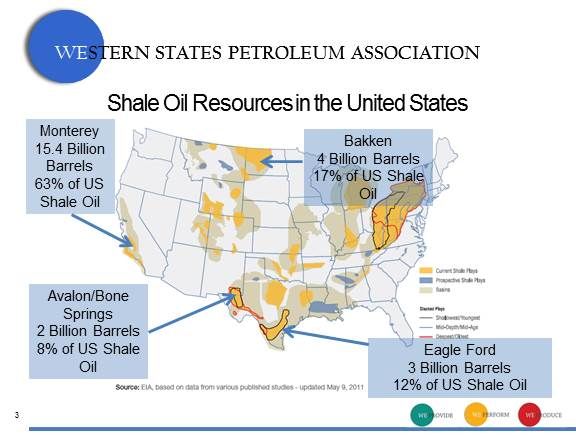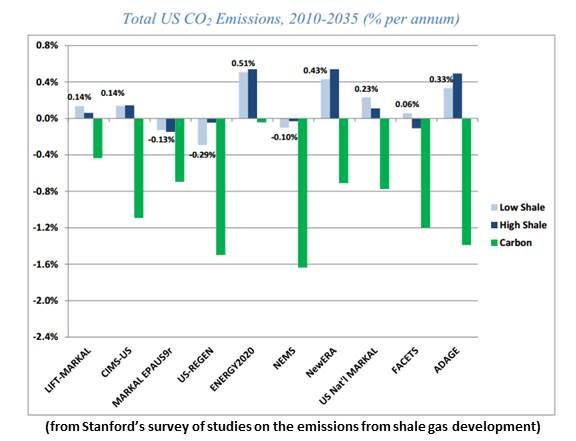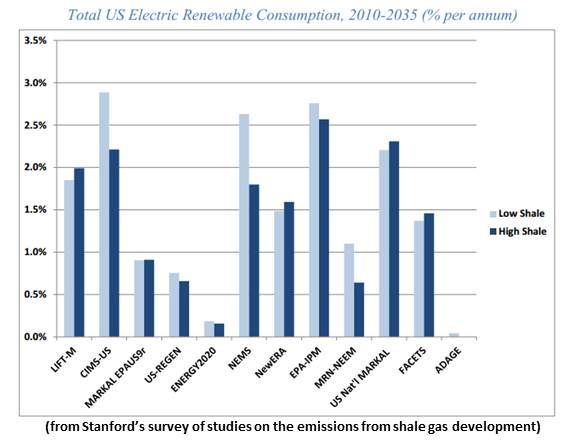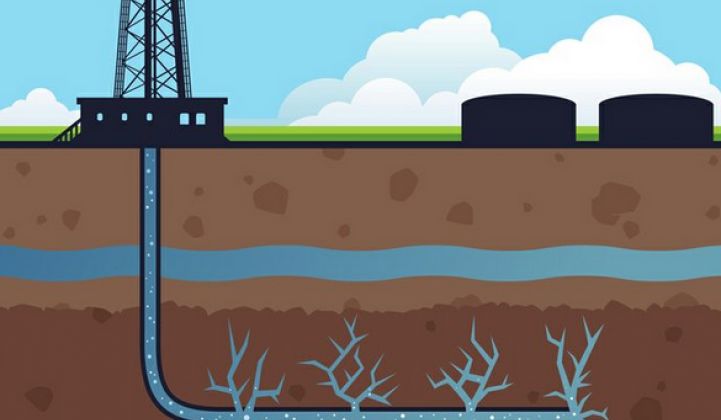California leaders are talking about energy abundance -- but they aren’t talking about solar and wind.
State policymakers are considering the extraordinary economic opportunity in shale oil and gas. That's the first of California’s emerging trends, a discussion of how to exploit the potential bonanza in its Monterey shale, estimated to constitute 63 percent of all U.S. shale oil reserves, without sacrificing environmental standards.
State leaders are also considering how the development of fossil resources will impact the state’s ambitious goal to cut greenhouse gas emissions 80 percent from 1990 levels by 2050. That has led to the second trend, which is collaborations, consultations and partnerships between stakeholders in the oil and gas industry, state government, the environmental community, and business.
And, finally, there is new thinking around what comes after the state gets to its goal of 33 percent renewables by 2020, as well as increasing interest in a target other than renewables.
California and the oil and gas industry are working together toward the achievement of the Low Carbon Fuel Standard, noted both California Air Resources Board Chair Mary Nichols and Western States Petroleum Association President Catherine Reheis-Boyd in the opening plenary of VerdeXchange 2014, the seventh annual Los Angeles gathering of California’s greentech community.
Saving the state’s fracking industry means vital jobs and billions in state revenues, Reheis-Boyd said, “and we’re up for the challenge.”

She and other natural gas advocates celebrated the Legislature’s enactment of Senate Bill 4, which regulates the controversial hydrofracking necessary to get at the oil and gas in California’s shale. SB4 has “the strictest regulations in the U.S.,” she said, but is “balanced” to protect the state’s environment and groundwater while still allowing development.
In fact, SB4 had initially been backed by a broad coalition of environmentalists, but last-minute amendments compromised it enough that some pulled their support, according to V. John White, executive director of the Center for Energy Efficiency and Renewable Technologies. A tougher measure is expected in the next session. And, HE added, the partnerships and collaborations are great, “but we’re not seeing transparency and public engagement.”
Greenhouse gas reduction is “the bull’s-eye,” Nichols said, and all other state programs and policies are aimed at it.
In a session on fracking, California Oil and Gas Report Editor Dennis Luna said “natural gas has had a green effect” by replacing coal in the power sector.
We need natural gas to displace dirtier fuels, said SoCalGas Policy and Environment Director George Minter. But in the longer term, we need to “decarbonize” the pipeline, he added. Methane from waste and renewable sources will be the feedstock for the hydrogen economy of the future, in Minter's view.
The utility SoCalGas has been a partner in the Environmental Defense Fund’s extensive efforts to quantify the leakage of methane from natural gas pipelines. Methane is a greenhouse gas 70 times more potent than CO2, said EDF West Coast Political Director Lauren Faber. ”But if we depend on natural gas, we will not make our 2050 GHG reduction goals.”
Her concern with longer-term goals exemplified the third emerging trend that came up in almost every session.
Recent economic models show that natural gas for power generation plays an important role only through 2030, according to Anthony Eggert, executive director of the UC-Davis Policy Institute for Energy, Environment and the Economy. Without the technology needed for carbon capture and storage, which is current unavailable, the value of natural gas “declines precipitously” after that date.
Stanford’s recent report Changing The Game? Emissions and Market Implications of New Natural Gas Supplies (PDF), he added, concluded that the increasing use of shale gas after 2020 would cause emissions reductions to drop off as renewables and/or nuclear power are replaced. By 2035, it could cause a GHG increase without a price on carbon.
As a bridge fuel, natural gas developed according to best practices could be a useful part of the energy mix even in a climate-constrained world, Eggert explained. But a sound policy would move toward lower-carbon sources, in his view.

In a discussion about regulation of future energy, California Public Utilities Commissioner Carla Peterman noted that the state’s leaders have an “aligned vision” beyond 2020, but not a shared schema of “prioritization.”
“There is a tension between the now and the future,” Long Beach mayor and CAISO Board member Bob Foster agreed.
Policy and regulatory actions to support the 33 percent by 2020 mandate are still needed, Peterman said. But cutting emissions is just one of the things the RPS does. “When I think about post-33 percent, I ask what the right vehicle is to reduce greenhouse gases.”
There is currently no driver for achieving increased renewables or decreased emissions, noted White. “This year, discussions are beginning. Next year, there will be some wheels put on those discussions.”




